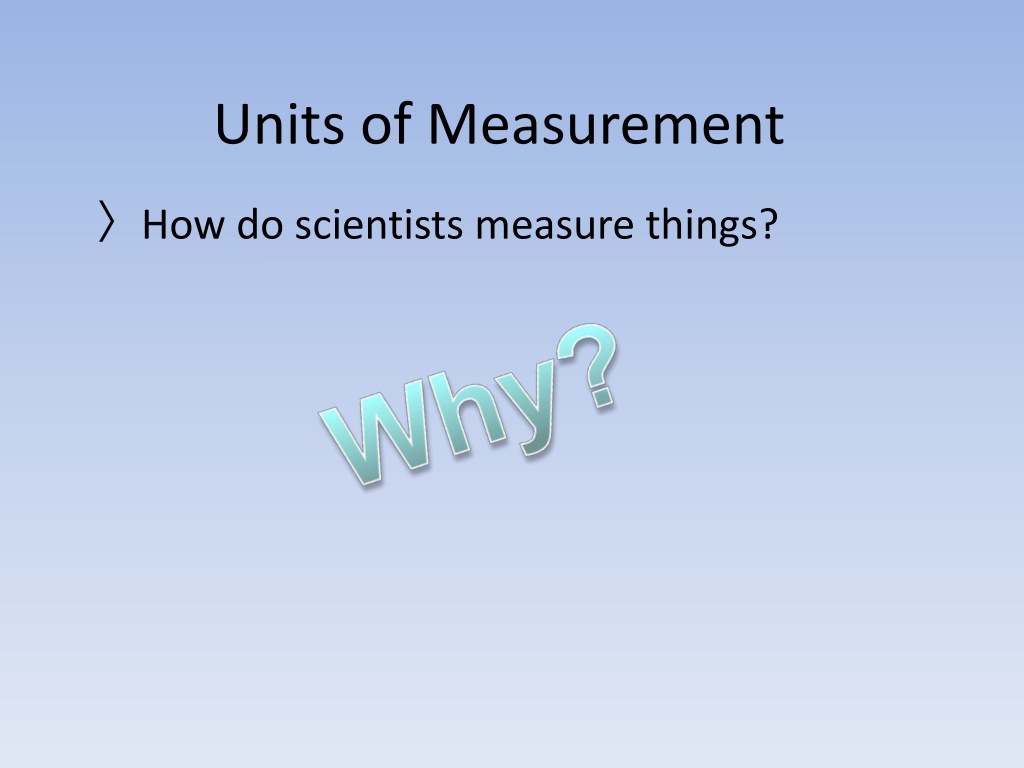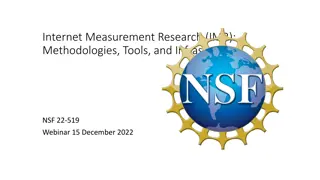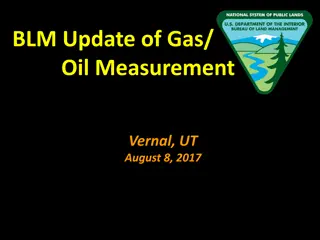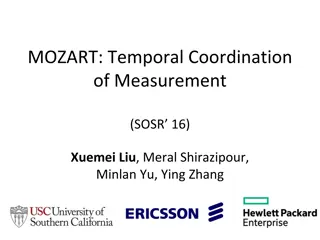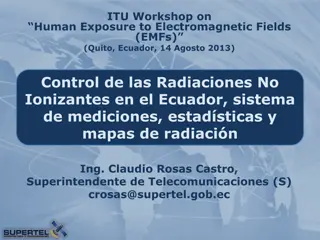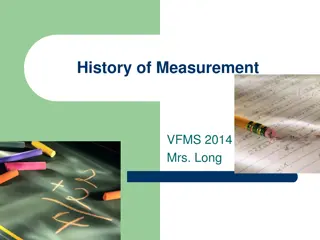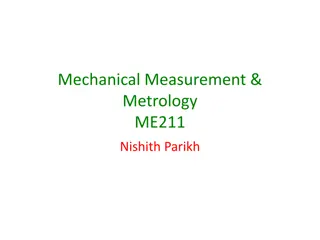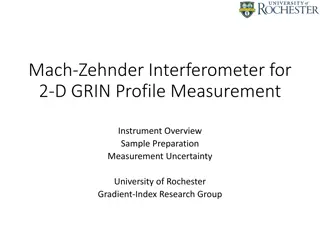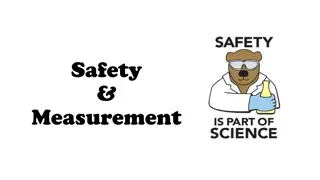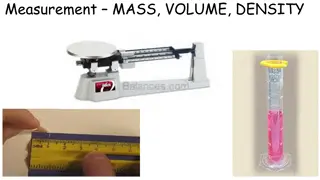Understanding Measurement in Science
Scientists measure various quantities using units such as length, mass, weight, and volume. The International System of Units (SI) provides a standard framework for measurements. Conversions between different units are common in scientific calculations, facilitating accurate and consistent measurements across disciplines.
Download Presentation

Please find below an Image/Link to download the presentation.
The content on the website is provided AS IS for your information and personal use only. It may not be sold, licensed, or shared on other websites without obtaining consent from the author. Download presentation by click this link. If you encounter any issues during the download, it is possible that the publisher has removed the file from their server.
E N D
Presentation Transcript
Units of Measurement How do scientists measure things?
Measurement uses numbers to describe processes and events Metrology is the study of measurement. This term comes from the Greek words metron which means measure and logos which means study of.
4 Common Measurements length: a measure of the straight-line distance between two points Base Unit Meter - m mass: a measure of the amount of matter in an object Base Unit Gram - g weight: a measure of the gravitational force exerted on an object Base Unit Newton - N volume: a measure of the size of a body or region in three-dimensional space Base Unit cubic centimeter cc or cm3or ml
The International System of Units is known as SI from its French name Systeme International d Unites. SI units are the current world standard for measurement. There are seven basic SI units. They are the meter, kilogram, second, ampere, kelvin, mole, and candela.
Conversions Common Conversions 100 cm = 1 m 1000 m = 1 km 1000 mm = 1 m 1 km = 0.62 mi 1 kg = 2.2 lbs 1 hr = 60 min 1 min = 60 s 3600 s = 1 hr
Conversions Convert your mass in lbs to kg.
1 step conversions 1000 cm = ? m 45 mg = ? g 800 kL = ? L 200 lbs = ? Kg 1kg = 2.2 lbs
2 step - conversions 100 cm = ? km 8 kg = ? cg 4500 g = ? Lbs 50 m2 = ? cm2
Complex Conversions 10 m/s = ? mi/h 1200 cg = ? Lbs 5 cm3 = ? m3
Conversion Practice 45 mg = ? g 800 L = ? cL 8 km = ? m 5 miles = ? km 0.62 miles = 1 km
Common Metric English Conversions Force 1 lb = 4.48N Length 1 in. = 2.54 cm 1 m = 3.281 ft 1 yd = 0.9144 m 1 km = 0.62 mi Volume 1 L = 1.06 qt 1 ml = 1cm^3 Mass 1 kg = 2.2 lbs 1000 kg = 1 t (metric ton) Time 365 days = 1 year 1 day = 24 hr 1 hr = 60 min 1 min = 60 s 3600 s = 1 hr
